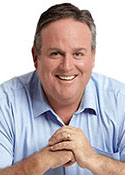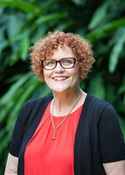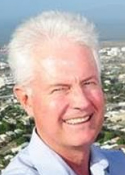Herbert
Margin: Liberal National 6.2%
Region: Townsville, Queensland
In a nutshell: The Townsville-based seat of Herbert was held by Labor through the Hawke-Keating years, but has remained beyond their grasp by varying margins ever since.
Candidates in ballot paper order

|
MICHAEL PUNSHON COLIN DWYER MARTIN BREWSTER GEOFF VIRGO CATHY O’TOOLE WENDY TUBMAN EWEN JONES AARON RAFFIN DAVID HARRIS |
The Townsville-based electorate of Herbert is a marginal seat that the Coalition parties have somehow managed retain since 1996, often on highly tenuous margins. The seat has existed since federation, at which time it encompassed Cape York and extended south to Mackay. Cairns and Cape York were lost to Kennedy in 1934, Mackay went to Dawson in 1949, and it came to be entirely dominated by Townsville with the enlargement of parliament in 1984. The southern edges of the city were absorbed by Dawson in the 2007 and 2010 redistributions. The strongest booths for Labor are generally in the town centre and its surrounds, while those in the outer suburbs tend to be more volatile as well as more conservative. The electorate is home to defence facilities including Lavarack Barracks and an RAAF base, and ranks third out of 150 for number of persons working in defence. Relatedly, a concentration of people in their twenties gives the electorate the country’s third youngest median age.
Herbert was one of 14 seats won by state-based Labor parties at the first election in 1901, and it held by the party more often that not until 1966, when Robert Bonnett won it for the Liberals as part of the Harold Holt landslide. It then swung to the Liberals at a further four electorates in a row, two of which went against the national trend. Labor re-emerged as a threat in 1980 when their candidate, Ted Lindsay, reduced the margin from 7.7% to 0.9%. Lindsay finally gained the seat for Labor on his third attempt in 1983, and went on to hold it through the Hawke-Keating years on margins ranging from 2.4% to 6.8%. In the absence of a Liberal sitting member, the Nationals outpolled the Liberals through their period of strength in Queensland in 1984 and 1987, before slumping to a distant third in 1990.
Together with most of his Queensland Labor colleagues, Ted Lindsay was unseated at the 1996 election by unrelated Liberal candidate Peter Lindsay, who outpolled the Nationals candidate 38.8% to 15.1% and scored a 9.0% swing against Labor on two-party preferred. Ted Lindsay came within 160 votes of pulling off a comeback after a 6.5% swing in his favour in 1998, but this was followed in 2001 and 2004 by consecutive Liberal swings of 1.5% and 4.7%. Peter Lindsay survived another close shave by 343 votes in 2007, a swing to Labor of 5.9% failing to match the 7.5% swing statewide that cost the Coalition eight seats.
With Lindsay’s retirement in 2010, the task of defending the Liberal National Party’s tenuous hold on the seat fell to Ewen Jones, an auctioneer for local real estate agency Ferry Property. Jones’s Labor opponent was Tony Mooney, who served for nearly two decades as mayor of Townsville and earned a footnote in Australian political history when his failure to win the 1996 Mundingburra by-election for Labor led to the downfall of the Goss government. Perhaps reflecting the loss of Lindsay’s personal vote, Jones picked up what by Queensland standards was a modest swing of 2.2%, which was nonetheless sufficient to secure on a seat that had been made notionally Labor through a slight adjustment in the redistribution.
While remaining on the back bench, Jones has been noted for saying he would cross the floor to vote in favour of same-sex marriage, and in pursuing Clive Palmer over the demise of his Townsville-based Queensland Nickel company in early 2016, which resulted in 237 jobs being lost with $74 million owing in workers’ entitlements. He was one of a small number of Liberal MPs whose loyalties were rated by The Australian as uncertain during Malcolm Turnbull’s successful leadership challenge in September 2015. His Labor opponent for the second election in a row is Cathy O’Toole, chief executive of a regional Queensland mental health not-for-profit and a member of the Left. O’Toole won a preselection ballot against two rival nominees, reportedly with two-thirds of the vote.
 Labor hit a spot of bother in the first week of the campaign when a doorstop involving Bill Shorten and Cathy O’Toole was dominated by O’Toole’s involvement in a protest at Liberal member Ewen Jones’s electorate office in February pleading for “a more humane policy for refugees”.
Labor hit a spot of bother in the first week of the campaign when a doorstop involving Bill Shorten and Cathy O’Toole was dominated by O’Toole’s involvement in a protest at Liberal member Ewen Jones’s electorate office in February pleading for “a more humane policy for refugees”.
Analysis by William Bowe. Read William’s blog, The Poll Bludger.


